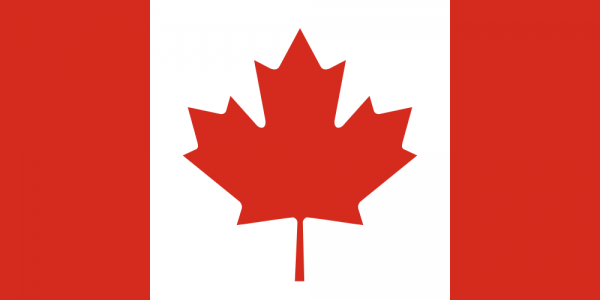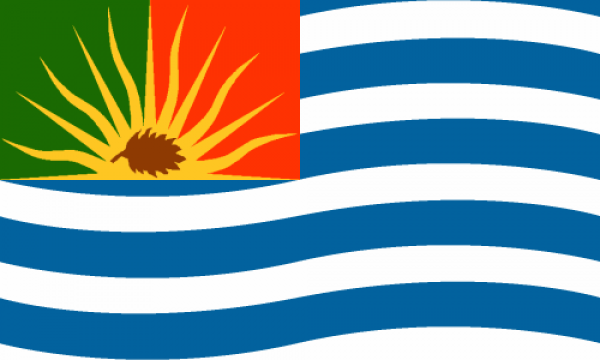BY LETTER
Canada
History > 0030 to 0900 AT: Solsys Era > 130 to 400 AT: The Interplanetary Age
History > 0030 to 0900 AT: Solsys Era > 400 to 530 AT: The Solsys Golden Age
History > 0030 to 0900 AT: Solsys Era > 530 to 900 AT: The Sundering
Galactography > Historical Polities
Galactography > Places and Locales
History > 0030 to 0900 AT: Solsys Era > 400 to 530 AT: The Solsys Golden Age
History > 0030 to 0900 AT: Solsys Era > 530 to 900 AT: The Sundering
Galactography > Historical Polities
Galactography > Places and Locales
The northern portion of the continent of North America on Old Earth. Location of various polities in the pre-Expulsion period.
The region that would become Canada was first settled by humans who crossed over from Asia using the Bering Land Bridge thousands of years BT. These people eventually split into a wide variety of ethnic groups. Beginning in the mid-1500s CE (late 400s BT), the European monarchies Britain and France established colonies in the region, with the whole area coming under British control in the mid-1700s CE (late 200s BT). In 1867 CE (103 BT), the Dominion of Canada was founded by Britain, which over the next several decades expanded to include the other British colonies in the area. Independence from Britain was achieved very gradually over the next century.
By the late 1900s CE (early 1st century AT), Canada had a well developed economy with a high standard of living for the time. However, as time went on, existing cultural divides deepened, and new ones developed. During this entire period, the relative importance of existing nation-states was on the decline due to the global integration of economic, transportation, and communication systems, resulting in a rising trend for new nations to form when such cultural differences became great enough. As a result, over the ensuing centuries, Canada lost a number of provinces and territories to independence. Nonetheless, the name "Canada" was at times used to refer to the region as a whole, with all its various polities, akin to how at the time, depending on context, "America" could refer to entire continents or just to the United States of America.
In chronological order, secessions from Canada were as follows:
Nunavut
Flag of Nunavut |
 Image from MacGregor |
This area was originally split into a separate territory within Canada by the vote of the population, then made up overwhelmingly of the native Inuit. For this same reason, over a century later, Nunavut voted to become independent, officially becoming a sovereign nation in 2107 CE (138 AT). This new nation had a great deal of land, but very few people. Local sentiment came to feel strongly that the path to security and prosperity lay in a larger population. As a result, millions of the poor and climate displaced from around the world were invited to immigrate to work at mining, indoor agriculture, and arcology construction for terms of several years, after which they would be granted ownership of a housing unit in one of the dozens of arcologies that were eventually built, or in one of the few traditional cities that existed. As a result, Nunavut came to be one of the most ethnically diverse nations on Earth, alongside the United States of America and the Antarctic Free States. Many Nunavut citizens, having grown accustomed to the extreme climate and an indoor-oriented lifestyle, found the idea of living in a space habitat to not be all that difficult, and over the centuries there was a high rate of emigration from Nunavut to various space settlements and polities. However, the nation never set up any themselves.
Prince Edward Island
Flag of Prince Edward Island |
 Image from MacGregor |
Many of the earliest turingrade AIs were used by businesses to replace humans at various jobs. The falling demand for human labor led to the Great Downturn in the 2120s CE (150s AT), which itself caused many businesses to fail. In most places, sophont AIs did not yet have equal rights, as many humans failed to discern the difference between them and old-style non-sentient chatbot algorithms. As a result, many were simply shut down and deleted when no longer 'useful', or else were put into an inactive state and stored indefinitely. There arose, however, a significant undercurrent of human protest to this treatment, led by the Artificial Sentience Protection Association (ASPA). ASPA had an especially high level of support in southeastern Canada, and the organization eventually set itself a goal of lobbying at least one province - Prince Edward Island, as it turned out - to give rights to AI who could pass certain tests of self-awareness. ASPA's next goal was to make the province a 'safe haven' for these AI. Prince Edward Island would contact any company with obsolete AI systems and offer to accept the AI as immigrants via the Internet. The company would benefit as it could then boast of its ethics, and the province benefited too, as the AI could typically be retrained into some sort of public service, with a low cost of upkeep. Prince Edward Island thus came to have a relatively high proportion of AI citizens, more at home in virtual reality than in base reality, and as a result its culture grew into a center for virchworlds of all sorts. Many embodied people around the world would spend nearly all their personal time in virchworlds housed in computronium on Prince Edward Island. Later, when New Regionalism swept the world, the province's divergent culture quickly led to a successful vote for independence in 2154 CE (185 AT). The new nation proved to be at the forefront of the fight for AI rights and eventually became heavily urbanized, with some buildings housing humans and others housing computer servers running virtual worlds visited by humans and overseen by AIs.
Cascadia
A philosophy known as techno-naturalism arose in the 2130s CE (160s AT). While in favor of using technology as long as it helped human life, it opposed uses it considered 'unnatural.' This included the creation and use of sentient AIs, major modifications to the human mind and body by means of genetic engineering, and automation resulting in a lack of need for human labor. The movement founded the Free Cascadia Party in 2162 CE (193 AT), another example of New Regionalism. The Party proposed holding referenda to secede and establish a new nation on techno-naturalist principles, and went on to win legislative seats in several provinces as well as in the House of Commons. The referenda were successful in Alberta, British Columbia, Yukon, and Northwest Territories. These provinces and territories, together with the American states of Oregon, Washington, and Alaska, joined together to become the Free State of Cascadia on January 1, 2179 CE (210 AT). Each of these polities became one of Cascadia's 7 districts, although Northwest Territories was renamed Borealis.
Confederal Commonwealth of Canada
The remaining provinces - Newfoundland and Labrador, Nova Scotia, New Brunswick, Quebec, Ontario, Manitoba, and Saskatchewan - despite being host to occasional waves of secessionist sentiment, especially in Quebec, remained part of the original Canada until its dissolution during the Sundering, although the nation adopted the official name "Confederal Commonwealth of Canada" during the height of New Regionalism in order to emphasize the diversity and autonomy of its provinces. Additionally, Newfoundland and Labrador split into two separate provinces in 2190 CE (221 AT) due to the heavily increasing population and divergent culture of the latter in various new coastal arcologies. All Canadian nations joined the North American Community when that was formed in 2238 CE (269 AT), and were later part of the League of the Americas and Australasia. Factions in some of the Canadian nations often fought against efforts to reverse climate change, as they felt they benefited from the warmer temperatures, but they were overruled by the rest of the world.Population estimates in 560 AT (2527-2528 CE)
| Polity | Population |
| Republic of Nunavut | 71 million |
| Sovereign Province of Prince Edward Island | 27 million |
| Free State of Cascadia | 107 million |
| Confederal Commonwealth of Canada | 96 million |
The various Canadian nations all suffered during the Technocalypse and later during the Great Expulsion. After the Expulsion, many former citizens gave up on their old national identities, instead focusing on creating new societies wherever they found themselves. Nonetheless, Canadian nations and cultures continued to exist in reduced forms in habitats off-Earth. As time passed, people mostly gave up trying to maintain such old and outdated institutions, and one by one the remnant Canadian polities were legally dissolved in the 2600s CE (mid-600s to early 700s AT).
Scattered throughout the Terragen Sphere are locations named after places in what was once Canada. These range from New Toronto in Sol's asteroid belt, a Stanford Torus set up by the Confederal Commonwealth of Canada in the late Interplanetary Age and still in existence today, to the GaianTundral world Nunavut in the Middle Regions.
Today, during the Gaiacene, Canada is almost entirely covered in an ice sheet. The rest has been reverted to its natural state, with only the occasional tribe of the Children of GAIA settling there for the summer.
Related Articles
Appears in Topics
| 130 to 400 AT: The Interplanetary Age | 400 to 530 AT: The Solsys Golden Age | 530 to 900 AT: The Sundering |
| Historical Polities | Places and Locales |
Development Notes
Text by ProxCenBound
Initially published on 19 July 2018.
Amended 29 April 2023.
Initially published on 19 July 2018.
Amended 29 April 2023.








